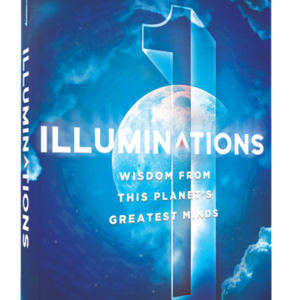Historical Origins and Evolution of the Illuminati
The Illuminati, often shrouded in mystery and conspiracy theories, traces its origins to the Bavarian Illuminati, a secret society founded by Adam Weishaupt on May 1, 1776. This organization emerged in the socio-political landscape of 18th-century Bavaria, a period marked by the Enlightenment—a philosophical movement advocating for reason, secularism, and individual liberties. Weishaupt, a professor of canon law and a proponent of Enlightenment ideals, sought to create a clandestine group aimed at promoting rationalism and freedom from the oppressive religious and political structures of his time.
The Bavarian Illuminati initially aimed to foster enlightenment values, support secular education, and combat religious and political tyranny. The group’s members, often influential intellectuals and progressive thinkers, were dedicated to these principles and pursued objectives that included the promotion of critical thinking, the dissemination of knowledge, and the encouragement of moral and social improvement. The Illuminati’s hierarchical structure and secretive nature, however, eventually drew the suspicion of the Bavarian government.

In 1785, the Bavarian government, alarmed by the perceived threat posed by the Illuminati to the established order, banned the organization. This led to the disbandment of the group and forced its members into secrecy. The dissolution of the Bavarian Illuminati did not mark the end of its influence; instead, it transitioned into a more covert existence, fueling various conspiracy theories that persist to this day. The notion that the Illuminati continued to operate behind the scenes, manipulating global events, has become a staple of modern conspiracy lore.
The Illuminati is often associated with a range of symbols, the most famous being the All-Seeing Eye and the pyramid. The All-Seeing Eye, often depicted within a triangle, is believed to symbolize the omnipresent and omniscient nature of the society. The pyramid, with its connotations of stability and longevity, represents the enduring influence and hierarchical nature of the Illuminati. Key figures in the Illuminati included notable intellectuals and progressive thinkers of the time, whose contributions to the society’s goals have been the subject of much speculation and intrigue.
Modern-Day Perceptions and Conspiracy Theories
In contemporary discourse, the term “Illuminati” has undergone a significant transformation. Once referring to a historical group of enlightened intellectuals, it is now often associated with a shadowy secret society purportedly manipulating global events and governments. This modern-day perception is heavily influenced by an array of conspiracy theories that have taken root in popular culture.
Popular culture has played a pivotal role in perpetuating the myths surrounding the Illuminati. References to this enigmatic group can be found in literature, films, music, and social media, where they are often depicted as the puppet masters behind major world events. For instance, blockbuster movies and best-selling novels frequently feature the Illuminati as central antagonists, weaving narratives of global domination and clandestine operations. Musicians and celebrities are sometimes accused of being members of the Illuminati, with symbols and messages allegedly hidden in their work, further fueling public intrigue.
The fascination with the Illuminati can be partly explained through psychological and sociological lenses. Humans have a natural tendency to find patterns and seek explanations for complex, often chaotic events. The idea of a powerful, unseen entity orchestrating world affairs provides a simplified, albeit erroneous, explanation for these complexities. This inclination is compounded by the appeal of mystery and the allure of forbidden knowledge, making the Illuminati an enduring subject of speculation.
However, the impact of these conspiracy theories extends beyond mere curiosity. The spread of misinformation regarding the Illuminati can foster distrust in established institutions and authorities. This skepticism can undermine public confidence in governmental and social structures, leading to a fragmented and polarized society. Moreover, such theories can divert attention from genuine issues and challenges that require collective action and informed discourse.
Expert opinions and scholarly research provide a counterbalance to these pervasive myths. Academics and historians have debunked many of the claims associated with the modern-day Illuminati, highlighting the lack of credible evidence to support the existence of such a secret society. Through rigorous analysis and fact-checking, these experts offer a more grounded perspective, emphasizing the importance of critical thinking and skepticism in the face of sensationalist narratives.



Reviews
There are no reviews yet.